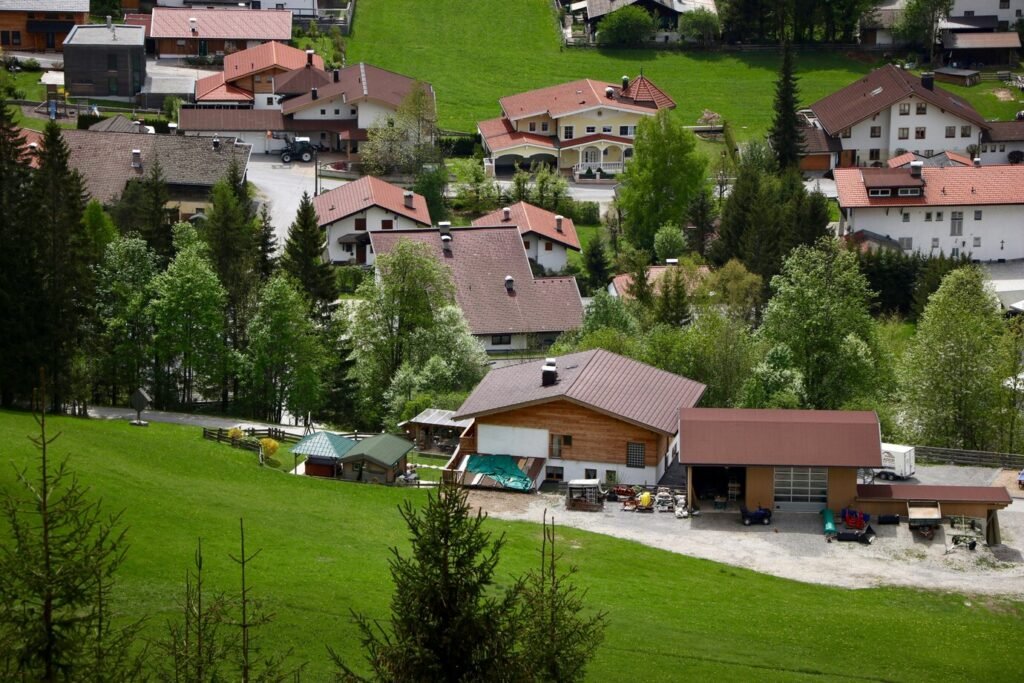Affordable housing remains a cornerstone of socioeconomic development, as it addresses the critical need for safe and accessible homes for individuals and families across diverse demographics. Recent initiatives have highlighted the strategic efforts to roll out affordable housing schemes across eight districts, signaling a transformative shift in urban planning and public welfare.

The Importance of Affordable Housing in Regional Development
Affordable housing plays a pivotal role in fostering economic stability, reducing homelessness, and enhancing community resilience. By ensuring access to reasonably priced housing options, policymakers can mitigate income disparities and support vulnerable populations. This initiative aims to meet the increasing demand for affordable homes while promoting sustainable urban growth in the eight targeted districts.
Key Objectives of the Housing Schemes
- Increasing Home Ownership: The schemes aim to enable lower-income groups to transition from renting to owning homes, thereby fostering financial security.
- Boosting Employment Opportunities: The construction and development of these projects are expected to generate thousands of job opportunities within local communities.
- Enhancing Urban Infrastructure: These housing schemes prioritize modern amenities, green spaces, and public facilities, contributing to holistic community development.
- Reducing Urban Congestion: Strategically located in underdeveloped areas, the projects aim to alleviate pressure on overcrowded urban centers.
Overview of the Eight Targeted Districts
Each of the eight districts has been carefully selected based on demographic trends, housing deficits, and economic potential. Below is an in-depth analysis of how these districts will benefit from the affordable housing schemes:
1. District A
District A has faced a significant shortage of affordable housing due to rapid urbanization. This project will focus on providing subsidized housing for low- and middle-income families, coupled with improved access to public transportation.
2. District B
Known for its high population density, District B will benefit from vertical housing solutions. Multi-story apartment complexes with energy-efficient designs will be a key feature of the development plan.
3. District C
District C’s affordable housing scheme aims to revitalize underutilized land. By converting idle spaces into thriving residential hubs, the initiative will encourage economic activity in the region.
4. District D
In District D, the focus will be on sustainable housing models. The inclusion of solar energy systems, rainwater harvesting, and eco-friendly construction materials underscores a commitment to environmental sustainability.
5. District E
District E’s development plan prioritizes proximity to industrial areas, ensuring affordable housing for workers. The integration of vocational training centers will further empower residents with skill development opportunities.
6. District F
Rural-urban migration has significantly impacted District F. The proposed housing schemes will provide a balance between affordability and modern living standards, addressing the needs of this transitional demographic.
7. District G
District G’s initiative includes housing options for senior citizens and persons with disabilities. Accessible design and healthcare facilities will be central to these developments.
8. District H
District H is slated to become a model for mixed-income housing. By blending subsidized and market-rate units, the project aims to create a diverse and inclusive community.

Funding and Implementation Strategies
The successful implementation of these housing schemes hinges on robust funding and strategic planning. Government subsidies, private sector partnerships, and international grants will collectively finance the projects. Additionally, cutting-edge construction technologies, such as modular building techniques, will expedite project completion while minimizing costs.
Public-Private Partnerships (PPPs)
Public-private partnerships will play a critical role in executing these projects. By leveraging the resources and expertise of private entities, the government can ensure efficient and high-quality construction.
Incentives for Developers
Developers participating in these initiatives will benefit from tax breaks, reduced land acquisition costs, and streamlined regulatory processes. These incentives aim to encourage active collaboration between public and private stakeholders.
Community Engagement
Community involvement is crucial for the long-term success of affordable housing schemes. Regular consultations with local residents will ensure that the projects align with their needs and preferences. Additionally, workshops and awareness campaigns will educate beneficiaries on the application process and housing rights.
Anticipated Challenges and Mitigation Plans
While the proposed housing schemes hold immense promise, certain challenges may arise during their implementation. These include:
- Land Acquisition Issues: Delays in acquiring suitable land can hinder progress. Establishing a transparent land acquisition framework is essential.
- Financial Constraints: Securing consistent funding may be challenging. Diversifying revenue streams through public bonds and international aid will address this concern.
- Resistance to Change: Residents may resist relocations or new developments. Comprehensive stakeholder communication and incentives will ease transitions.
Expected Outcomes
Upon successful implementation, these affordable housing schemes are anticipated to deliver several positive outcomes:
- Economic Growth: The influx of new residents will boost local economies through increased demand for goods and services.
- Improved Quality of Life: Access to affordable housing will enhance living standards and provide families with a sense of stability.
- Urban Transformation: These developments will serve as catalysts for urban renewal, fostering vibrant and sustainable communities.

Conclusion
The plans for affordable housing schemes in the eight districts reflect a comprehensive approach to addressing one of society’s most pressing challenges. By prioritizing affordability, sustainability, and inclusivity, these initiatives hold the potential to transform the housing landscape and improve countless lives.
FAQ’s
What is the goal of these affordable housing schemes?
The goal is to provide low- and middle-income families with access to affordable, safe, and sustainable housing options. These schemes aim to address housing shortages, reduce urban congestion, and support economic growth in underdeveloped areas.
Who is eligible for these housing schemes?
Eligibility criteria typically include income limits, residency requirements, and priority for specific groups such as low-income families, senior citizens, and persons with disabilities. Specific details will depend on government policies.
How can I apply for affordable housing?
Applications are usually processed through local housing authorities or online government portals. Applicants must provide necessary documentation, such as income verification, proof of residency, and identification.
What facilities will these housing projects offer?
The housing projects will include modern amenities such as green spaces, community centers, energy-efficient designs, healthcare facilities, and proximity to schools, workplaces, and public transport.
What is the timeline for these projects?
While timelines vary by district and project scale, most schemes aim to complete construction and handovers within 2–5 years.
How are these projects funded?
Funding is secured through a combination of government subsidies, public-private partnerships, international grants, and other financial incentives.
Will these housing schemes impact property prices in the area?
Affordable housing projects often stabilize property prices by increasing the availability of homes, which can make housing more accessible to a broader population.


